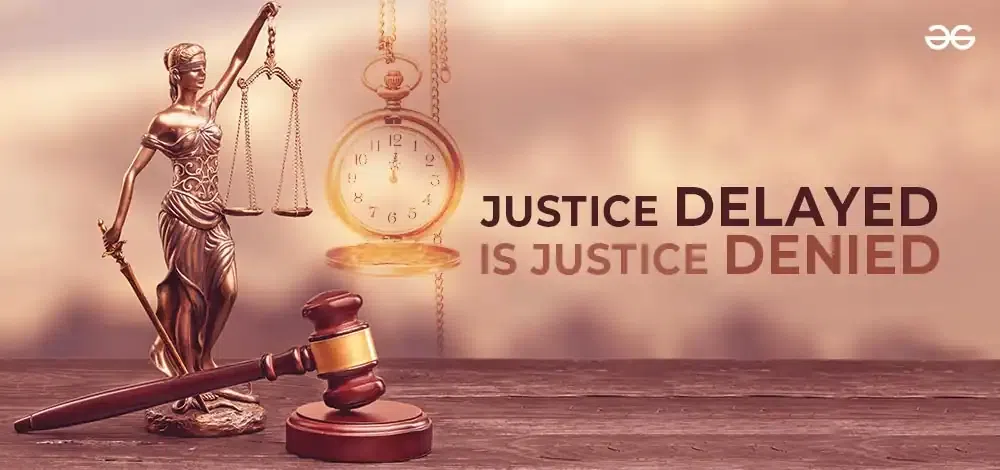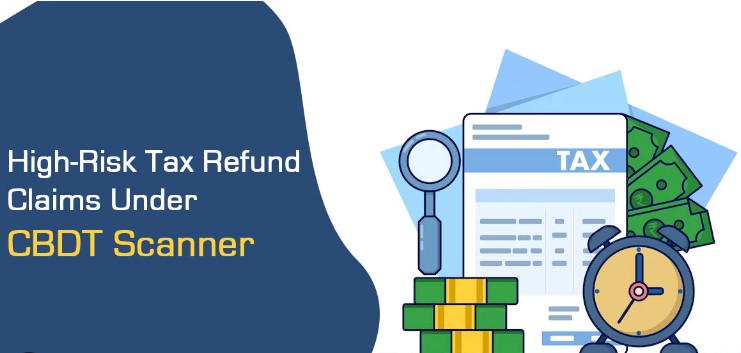
Justice Delayed is Justice Denied: Deep-dive into the Implementation of the e-Appeals Scheme, 2023
Published In : TAXMANN Download
Author : Navneet Singal
Justice Delayed is Justice Denied: Deep-dive into the Implementation of the e-Appeals Scheme, 2023
I. Introduction
Proper implementation is key to the success of any policy. J.R.D. Tata quoted once that,
“Most of our troubles are due to poor implementation, wrong priorities and unattainable targets”[1]
Poor implementation of any good policy destroys its effectiveness; the administrative system of India is concrete proof of this. We make good policies, but fail when it comes to their implementation.
The Finance Ministry introduced the Faceless Appeal Scheme, 2021 (‘FAS, 21’) in the year 2020, expecting it to fasten the process in a discretionary manner. However, before the scheme could fully settle down, some of its unfair provisions were challenged by taxpayers before the courts, which led to the government announcing an amended scheme in December 2021. The proper implementation of the scheme never took place. Within just one year, a plethora of pending appeals accumulated, causing the government to introduce a new e-Appeals Scheme, 2023 (‘EAS, 23’) along with FAS, 21 by amending the provisions by Finance Act, 2023 (FA, 23).
The new scheme made sweeping changes in the first appellate procedure under the Income-tax Act, 1961 (‘the Act’). Parliament roped in an additional appellate authority viz. the Joint Commissioner (Appeals) (JCIT(A)), who has plenary power to adjudicate appeals from various orders which is exercisable in addition to that exercised by the Commissioner (Appeals) (CIT(A)). It was a great initiative by the CBDT, providing a more transparent and accessible platform for more effective and speedier disposal of pending matters. However, even after 6 months of amending provisions, there was no allocation of appeals to the JCIT (A) nor any relief to taxpayers. The faulty implementation of the processes and schemes ended up causing an unnecessary delay of justice.
The author of the article has analysed the recently implemented e-Appeals Scheme, 2023 (EAS, 23), the scope of the new appellate authority, and compared it with the prior situation. He has also attempted to determine whether the new scheme will live up to the hopes of the aggrieved taxpayers for speedy justice, and what role will this faceless system play in the new era?
II. Appellate system under the Income-tax Act, 1961
The Cornell Law School defines, “An appeal is a challenge to a previous legal determination. An appeal is directed towards a legal power higher than the power making the challenged determination. In most states and the federal system, trial court determinations can be appealed in an appellate court. The rulings of those appellate courts may be reviewed by a ‘court of last resort’.”[2] In the Indian judiciary system, the Supreme Court does.
'Appeal' is a legal construction. In addition, a person must be aggrieved to the point that he must be disappointed of a benefit that he would have received if the order had gone the other way, and not just disappointed.[3] An appeal from the decision of a Court, Tribunal, or quasi-judicial authority lies to a higher forum only if there is an underlying statute (such as the Income-tax Act, 1961) providing for it, falling which no appeal lies.[4][5]
In Income-tax Act, 1961, if an assessment order is made under the Act and the tax demanded by the tax officer offends you, you may appeal the decision before JCIT (A) or CIT(A). The JCIT(A), CIT(A), officials of the Income Tax Department (ITD) hear such appeals: this is the 1st level of appellate authority. You may file an appeal with the Income Tax Appellate Tribunal (ITAT), the 2nd level of appellate authority, if the CIT(A) order is found against you. The ITD may also appeal against such an order at the ITAT if the CIT(A) has ruled in your favour in the appeal. Higher appeals are filed following the ITAT, ultimately heard by the Supreme Court. From time to time, the central government has brought numerous schemes to improve the judicial system of Income-tax. Here, we will discuss the FAS, 21, and EAS, 23 which have made signification change to the overall judiciary system of the Act.
(A) Faceless Appeal Scheme, 2021 (FAS, 21)
The Finance Ministry, in its exercise of the powers conferred by sub-section (6B) of Section 250 of the Act, notified the ‘Faceless Appeal Scheme, 2020’, vide Gazetted Notification F. No. S.O. 3296(E), dated 25-09-2020. Thus, all the appellate proceedings before the CIT(A) were conducted in a faceless manner by virtue of this scheme. The scheme of 2020 was then replaced with the Faceless Appeal Scheme, 2021 (“FAS, 21”), which came into force on 28th December, 2021.
In the initial stage of its implementation, the issues raised were in respect to the requirement of personal hearing before passing of the final order by the Appellate Authorities. Both the Delhi High Court in the case of ‘M/s Sanjay Aggarwal v. National Faceless Assessment Centre (NFAC)’[6] and in the case of ‘Cuttack Tax Bar Association v. Union of India’[7] attempted to clarify the same issue. It was determined that the denial of a personal hearing violates both natural justice principles as well as the procedure outlined in Section 144B by the Supreme Court of India. In the case of ‘Central Board of Direct Taxes Vs Lakshya Budhiraja & Anr’[8], the Respondent argued that the scheme is violative of article 14 of the Constitution of India, as it does not follow the well settled principle of audi alteram partem. In response to this, the ASG asked for some time to make new rules in consonance with the principles of natural justice. Within 3 months, the FAS, 2021 was introduced and clarified the situation. Moving forward, personal hearings must be granted for the assessee that requests it. To guarantee that the structural concept of the Scheme is not compromised, the Court indicated that personal hearings can be conducted without disclosing the identity of the assessor.
Under the amended FAS, 21, a by-default right of personal hearing through video conferencing has been vested in the appellant. It has been mandated that the appellant may request for a personal hearing through video conferencing, and on receipt of such a request of the appellant, the respective CIT(A) in the appeal unit shall grant this.
Under the faceless appeals, everything from e-allocation of appeal, e-communication of notice/questionnaire, e-verification/e-inquiry, e-hearing and e-communication of the appellate order shall be online, dispensing the need for any physical interface between the appellant and the CIT(A). There shall be no physical interface between the taxpayers or their counsels and the CIT(A). The whole communication between CIT(A) and Appellant will be through National Faceless Assessee Centre (NFAC) and in a faceless manner.
This is a reform in the right direction. As the taxpayer and the tax officer would not know each other’s identities, there will be room for greater justice and confidence in the country’s taxation system. It will provide tremendous ease to taxpayers, assure just assessment and appeal rulings, and reduce additional litigation.
(B) e-Appeals Scheme, 2023 (EAS, 23)
The Finance Act, 23 introduced far reaching changes to the first appeals procedure under the Act. Under Section 246(1) as it stood before amendment by the Finance Act, 2023, every appeal filed before 1st June, 2000 against certain orders of the Assessing Officer (“AO”) (other than the Deputy Commissioner) was maintainable before the Deputy Commissioner (Appeals), and under Section 246(1A), every appeal filed between 1st October 1998 and 1st June, 2000 before the Deputy Commissioner (Appeals), stood transferred to the CIT (A). After 1st June, 2000, there was no provision for filing an appeal before the Deputy Commissioner (Appeals). Hence, for a period of more than 20 years, an appeal from more or less every conceivable order under the Act was maintainable before the CIT(A) only. It is only by the FA, 23 that an amendment was made roping in the JCIT (A).
The primary objective sought to be achieved by Parliament in introducing an additional appellate authority is to overcome the burden and overload of cases to be adjudicated by the CIT(A) and distribute the same to an additional appellate authority.( Memorandum explaining the provisions in the Finance Bill, 2023
New provisions inserted by the FA, 23 or amendments made in the Act to provide the authority and power to the JCIT (A) to deal with the new regime of 1st level of appellate orders. A gist of such new or amended provisions can be listed as below:
1) The definition of JCIT(A) and Additional CIT(A) has been defined under the Act. Further, amendment has also been made to include their authority as Income-tax Authorities under the section 2(28CA) and section 116(cca), respectively.
2) Section 246(2) and section 246(3) has been inserted to provide authority to transfer of pending appeals before CIT(A) to JCIT (A) and vice-versa respectively and further section 246(4) has been inserted to provide the opportunity of being heard to the appellant to eliminate any arbitrary transfers from one appellate authority to another and safeguards the rights of assessee to be heard in a fair and transparent manner.
3) e-appeals scheme has been notified under the power provided to the Central Government under section 246(5). Further, section 249, 250 related to Form of Appeals and limitation, procedure in appeals, respectively, amended to provide these provisions applicable to CIT(A) mutatis mutandis to JCIT(A).
However, when we compare the erstwhile regime of appeal only before CIT(A) and new regime of appeal with the additional authority of JCIT(A), the most of the process is similar except the nature of the order and power provided to them in respect of hearing of the appeal which we will discuss in the forthcoming paragraphs.
III. New regime of JCIT(A) vs. the erstwhile regime of appeal only before CIT(A)
Section 246(1) has been amended by the FA, 2023 to list the orders which are appealable to the JCIT(Appeals). A bare perusal of the list of appealable order before CIT(A), it can be easily made out that the CIT(A) can entertain appeals against a wider range of orders passed under the Act.
(A) Orders which are appealable before both authorities
(I) an order being an intimation under sub-section (1) of section 143, where the assessee objects to the making of adjustments
(II) any order of assessment under subsection (3) of section 143 or section 144, where the assessee objects to the amount of income assessed, or to the amount of tax determined, or to the amount of loss computed, or to the status under which he is assessed
(III) an order of assessment, reassessment or re-computation under section 147
(IV) an order being an intimation under sub-section (1) of section 200A (processing of statements of TDS)
(V) an order under section 201 (Consequences of failure to deduct or pay)
(VI) an order being an intimation under sub-section (6A) of section 206C (Collection of TCS)
(VII) an order under sub-section (1) of section 206CB (Processing of statements of TCS)
(VIII) an order imposing a penalty under Chapter XXI
It can be made out that an order of assessment passed under Section 143(3), or an intimation passed under Section 143(1) is maintainable before both the authorities. However, in case of JCIT(Appeals) the appeal is maintainable only if the assessee objects to the amount of income assessed, or amount of tax determined, or amount of loss computed, or to the status under which he is assessed.
Further, an order passed under Section 154 or Section 155 amending any of the orders as mentioned above is appealable to the JCIT(Appeals) only, whereas an order passed under Section 154 or Section 155 having the effect of enhancing the assessment or reducing a refund or an order refusing to allow the claim of the assessee under either of the said sections is appealable before the CIT(A).
(B) Orders which are appealable only before CIT(A)
(I) Proviso to Section 246(1) provides that no appeal shall be filed before the JCIT(Appeals) if an order as referred to in Section 246(1) is passed by, or with the prior approval of, an income-tax authority above the rank of Deputy Commissioner.
At this stage it is relevant to note Section 116 which lists the income-tax authorities. only the Inspectors of Income-tax, Tax Recovery Officers, Income-tax Officers, Assistant Directors of Income-tax/Assistant Commissioners of Income-tax are the authorities which are lower in rank than the Deputy Commissioner. Hence, only if the orders are passed by or with the prior approval of these authorities is an appeal is maintainable before the JCIT. Pertinent to note, that the legislature has used the words ‘income-tax authority’ and not ‘Assessing Officer’ and the proviso is to be construed accordingly.
(II) The CIT(A) has an additional power under Section 251(1)(aa) which states that in an appeal against the order of assessment in respect of which the proceeding before the Settlement Commission (now Interim Board of Settlement) abates under Section 245HA, the CIT(A) may after taking into consideration all the material and other information produced by the assessee or results of inquiry held or evidence recorded by the Settlement Commission in the course of the proceeding before it and such other material as may be brought on record, confirm, reduce, enhance, or annul the assessment.
Thus, it can be seen that where a proceeding is pending before the Settlement Commission, and it has subsequently abated under Section 245HA, and the order of assessment has been passed, the powers as stipulated above to confirm, reduce, enhance or annul the assessment is available only to the CIT(A) and not the JCIT(A).
It is noteworthy that by virtue of Section 245HA(2) r.w.s. 245HA(3), the AO will have jurisdiction to make an assessment order under Section 143(3), once the application of the assessee abates under Section 245HA(1). Now, while an order of assessment passed under Section 143(3) is appealable before both the JCIT(A) as well as the CIT(A) under Section 251(1)(aa), it is only the CIT(A) who has the requisite power as specified in the said section and the power of the JCIT(A) to confirm, reduce, enhance or annul the assessment is non-existent thereby making an appeal against an order of assessment under Section 143(3) virtually non-maintainable before the JCIT(A). This is for the reason that Parliament has consciously omitted the said additional power available to the CIT(A) from the hands of the JCIT(A).
IV. Appeal before the JCIT (A) will be in faceless manner.
The authority of the JCIT(A) has been constituted by the FA, 23 which has come into force w.e.f. April 1, 2023. Further to implement it, the e-Appeals Scheme, 23 has been launched. The EAS, 23 derives its power from Section 246(5) of the Act and was notified on 29th May, 2023 by publication in the Official Gazette and came into force from that date. The EAS, 23, is brought into to provide the process and procedure for appeal before the JCIT(A).
The NFAC, which is a communicator for the faceless appeal regime, does not exist under the EAS, 23 and hence it can be interpreted that as of now there is no provision of any faceless regime in appeal before the JCIT(A).
The NFAC which acts more or less like an agent of communication between the AO, appellant and the CIT(A) is the only thread for faceless appeal regime. NFAC thus supplements the adoption of faceless conduct of proceedings and ensures transparency by eliminating a direct interface between the parties.
Further, it can also be interpreted that whether it is proceedings before JCIT(A) or CIT(A), it will be conducted in the e-manner and in both cases, video-conference facility will be provided to the appellant.
V. Faceless Appeal Scheme, 2021 vs. e-Appeals Scheme, 2023
FAS. 21 and EAS, 23 are totally different and serve different purposes. Where, FAS, 21 introduced the faceless system in the appellate structure, EAS, 23 roped in the new authority of JCIT(A) to fasten the appellate process.
Difference between the existing Faceless Appeals Scheme 2021, which covers appeals before the Commissioner of Income-Tax (Appeals) and the e-Appeals Scheme 2023 is that Faceless Appeals Scheme involves communication through the National Faceless Appeal Centre (NFAC), whereas the E-Appeals Scheme allows direct communication between the JCIT(A) and taxpayers through a dedicated portal Scheme without any involvement of the NFAC. Such direct communication will help in a speedy flow of information and will contribute to efficient appeals resolution.
Also, in order to eliminate the cumbersome paperwork and to reduce delays, there would be electronic filing and processing of appeals under the new scheme. This transition to digital platforms will ensure better user-friendly and more convenient experience to the taxpayers. E-Appeal Scheme aims to address smaller issues mainly relating to TDS defaults, the processing of return of income orders, amongst others and reduce the pendency of appeals in such categories.
An appeal against an order of JCIT (Appeals) will lie before the Income Tax Appellate Tribunal, which has jurisdiction over the assessing officer of the assessee. It is a very good initiative by the CBDT providing a more transparent and accessible platform for a more effective and speedier disposal of pending matters.
VI. Implementation of FAS, 21 and EAS, 23
The FAS, 21 and EAS, 23 which the central government has notified, is one of the best world class model in the tax administration in the current era of digital transformation and tax technology. However, their implementation is an area of concern.
The faceless assessment and appeal scheme, which was introduced as the biggest direct tax reform 4 years back to reduce human interaction and rein in corruption, is in throes of major constraints with over 6 lakh appeals pending before tax commissioners and appellate tribunals. Taxpayers are finding it difficult to explain circumstances, and instead are presenting a plethora of documents, leading to the piling up of appeals. On the other hand, the finance ministry claims it has less manpower to deal with the huge number of appeals.
At the Income Tax Appellate Tribunal (ITAT) about 1 lakh; and at commissioner appeals about 6 lakh cases may be pending, according to former IRS officer Sanjay Kumar Srivastava.[9] Finance Minister Nirmala Sitharaman introduced the faceless appeal scheme applicable from April 2021 with a promise “to remove any element of discretion and any feeling of harassment that taxpayers may have”. but harassment in the form of delay in justice is making its own roots.
Faulty implementation of the entire technology process, from processing of tax returns, rectifications and appeals, has caused untold harassment to a large number of taxpayers, with no relief in sight. The worst part is that there has been no communication at all from the tax department as to whether the progress of the process is being monitored or not, whether the increasing pendency before the CIT(A) has been realized by the topmost levels of the department, whether steps are being taken to remove the obstacles and smoothen the process, and by when taxpayers can expect their appeals to be heard.
The EAS’23 had been launched from April 1, 2023 with the main motto of fasten the process and reduce the burden of piled up appeals before the 1st level of appellate authority but after 6 months of its launch, still we have not seen any notice issued or order passed by the JCIT (A). How much time it will take, which specific type of orders will be held by the JCIT(A) and whether there will be any threshold limit to transfer any case to JCIT(A), there are numerous questions which are still unanswered.
VII. Conclusion
Willam Gladston, the former prime minister of the UK stated in the 19th century,
“Justice delayed is justice denied.”
Over the years, famous jurists have often quoted the maxim. Due to the excessive delay in decision making by the first level appellate authority, income taxpayers in India have unfortunately become victims of this wrongdoing.
The introduction of numerous e-schemes and the best use of technology have not been able to resolve the issue just because of the delay in proper implementation of such schemes. It can also be said that there was a major flaw in the drafting of the scheme: no proper timelines were defined nor were solutions to possible problems during the execution worked out.
Without casting doubt on the undeniable expertise and skills of the CBDT’s administrative personnel, the fact that thousands of appeals are still pending and taxpayers have already paid thousands of crores of rupees in tax demands could be considered undue harassment of the taxpayers.
In an ideal world, taxpayers would have a timeline for how and when their cases would be resolved, whether it be at the first or second level of appeal, the High Court, or the Supreme Court. The appellate authorities would be subject to the same limitation rule that applies to taxpayers who have a limited window of time to file an appeal. Although taxpayers aren't hoping for a favourable decision, they do have the right to expect justice to be served in due time.
[1] https://observervoice.com/j-r-d-tata-quotes-31042/
[2] https://www.law.cornell.edu/wex/appeal
[3] CIT vs. N. Ch. R. Row & Co. [1982] 11 Taxman 226 (Cal.)
[4] CIT vs. Ashoka Engineering Co. [1992] 63 Taxman 510(SC)
[5] CIT vs. U.P. State Food & Essential Commodities Corporation Ltd. [2006] 285 ITR 152(All.)
[6] W.P.(C) 5741/2021
[7] W.P.(C) No. 33457 of 2020
[8] Transfer Petition (Civil) Nos.1445-1446/2021
[9] https://www.moneycontrol.com/news/business/economy - Dated 15-05-2023





